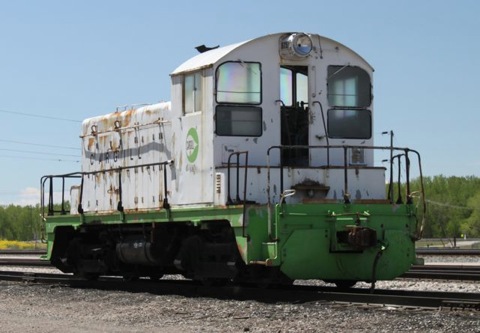
(An unofficial mirrored version of information removed from the official Golden Spike Chapter R&LHS web site; pages removed after August 2013; recovered via Archive.org's Wayback Machine.)
No. 6751 was donated by the Cargill Corporation May 21st, 2011.
The following information was obtained from Don Strack's Utah Rails website.
Cargill no. 6751 was built in September 1940 as B&O no. 213, then to B&O no. 8413, to Arco Petroleum no. 8417, at Carson, California, renumbered to Arco Petroleum no. 6971 (same location), to GATX no. 6971 at Colton, California, lease expired and unit stored at GATX facility until sold via Western Railway Supply (dealer) to Cargill, moved to Ogden in mid August 1993, repainted and lettered as Cargill no. 6751 replaced by a Trackmobile. Donated in April 2011 to Utah State Railroad Museum at Ogden Union Station. Delivery to the museum was made on May 21, 2011.

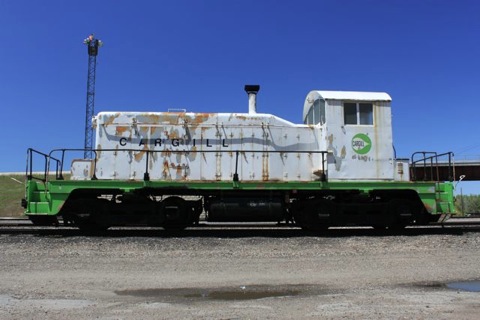
Above are two photos of the SW1 in the Ogden yard around 28th street awaiting switching into Track 1 behind the Union Station, May 21, 2011
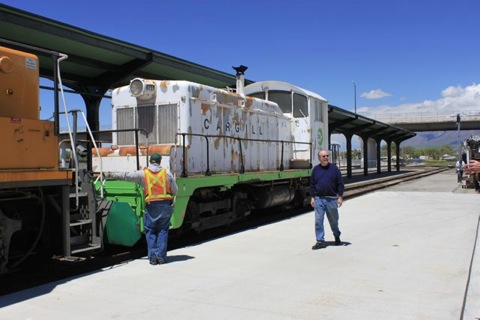
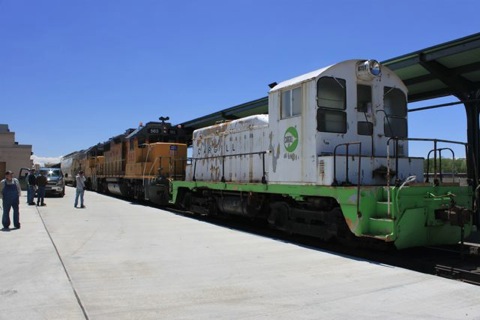
The locomotive is spotted opposite the restoration shop on Track 1. Cargill will repair damage to the wiring done by copper hunting vandals and will repaint it.
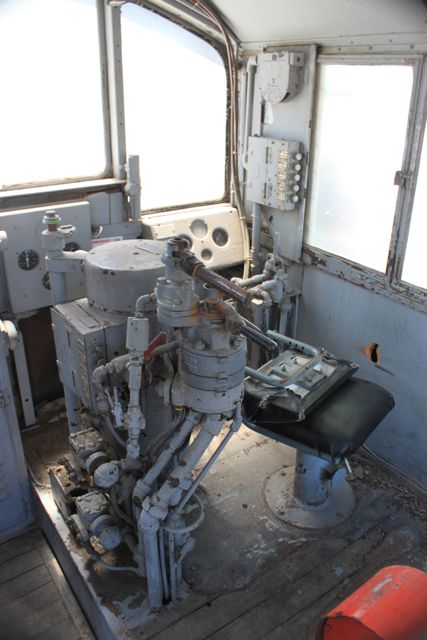
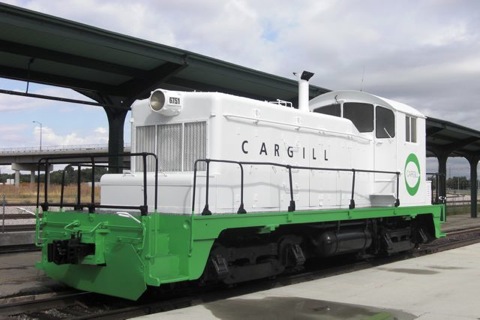
U.P. #833 is the crown jewel of the museum collection. American Locomotive Company built her in October 1939. She weighs in at a healthy 454 tons, engine and tender, and is 113 ft 10 1/8 Inches long. She has 80-inch diameter drivers and is balanced for a speed of 90 MPH, and officially ran as fast as a 110 MPH, and unofficially a fleet 120 MPH. The locomotive operates at a boiler pressure of 300 lbs. It has a computed horsepower of 4100 at a speed of 67 MPH.
The 833 was used to pull passenger and express trains, which ran through Ogden. At the end of the steam era, she was used to pull fast freight trains. She was retired in 1957 and set on the scrapper track at Cheyenne, Wyoming. She was donated to the City of Salt Lake in 1972.
Her tender is of a centipede wheel arrangement. It can hold 23,500 gals of water and 6,000 gals of fuel oil.
There are four of these type of locomotives preserved. One is in Council Bluffs, Nebraska, two in Cheyenne, Wyoming, (one of which is the famous U.P. 844 the railroad's only steam engine that has never been officially retired. It is used on excursions and other special runs.), and the 833 here in Ogden. She was moved here from Pioneer Park in Salt Lake City on February 21,1999. It was the largest steam locomotive ever moved by trailer. She is scheduled to be cosmetically restored in the future.
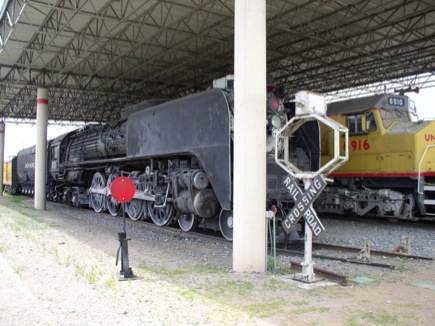
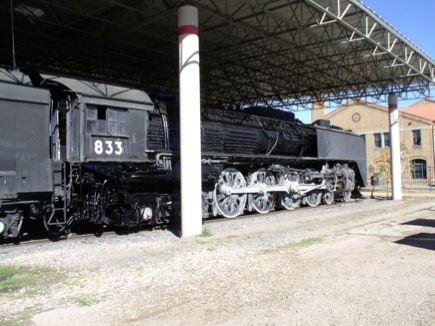
#4436 was built by the Baldwin Locomotive Works in March 1918. it is 60' 8" including tender and weighs 146.6 tons. It did yard service, possibly in Ogden, and retired September 6, 1958 when it was donated to the city of Ogden and displayed in a public park. When the Utah State Railroad Museum was established it was moved to its present location and given a new coat of black paint. Thanks go to John Lindquist for his assistance.
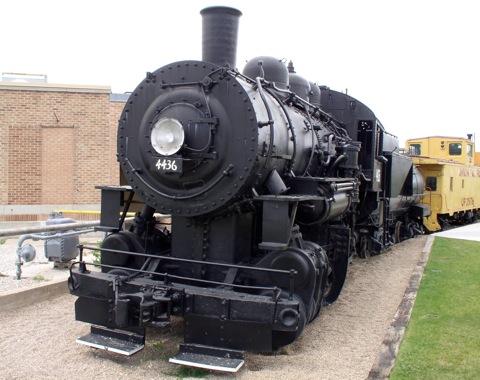
Built in 1881 by Grant Locomotive Works. Narrow gauge 3ft. Saw duty in Colorado and Central Utah on the D&RGW line. Donated to Salt Lake City in 1941 then the Utah State Railroad Museum in 1992. Restoration work is underway on this locomotive and tender. The cab reconstruction is near completion and the tender is in the latter stages of being rebuilt in the Trainmen's Shop at the north end of the museum.
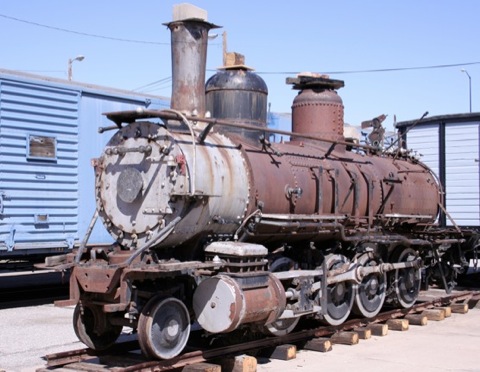
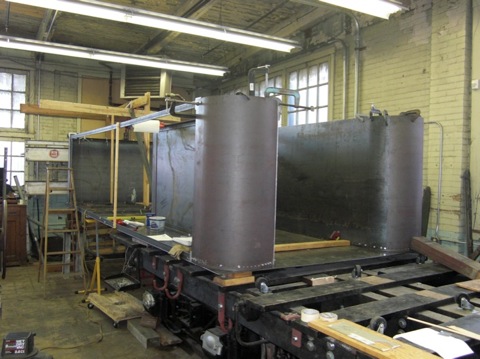
U. P. DDA40X #6916 was built by General Motors Electro-Motive Division in November of 1969. It weighS 542,432 Ibs, or 270 Tons. That is 5 times what a fully loaded Boeing 727 aircraft weighs. It used two Model 645E3A V-16 diesel engines, each one rated at 3,300 HP each for a total of 6,600 HP. She measures 98 ft 5 in. long. The fuel tank holds 8,230 gals of diesel fuel, and by itself full weighs in at 30 Tons. The locomotive has a 59/18 gear ratio with a maximum speed of 80 MPH. There are several of these engines preserved. One Centennial, U.P. 6936, is still in service being used for executive and occasional freight trains. #6916 was retired by the railroad May 16,1985 and donated to the museum January 1986.
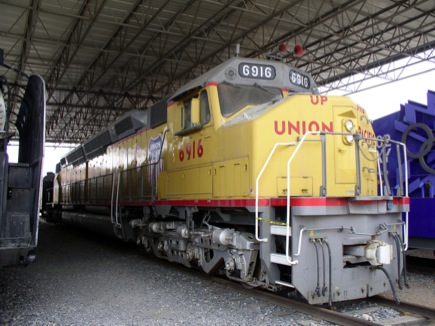
First model SD-45 freight locomotive built for the Southern Pacific Railroad in 1966. Originally numbered 8800, #7457 was the fIrst of 356 units delivered to SP, which had the largest fleet in the country. A V20 cylinder 645 diesel engine powered the SD-45 with 3600 horse power. It was used to pull freight from Ogden to the west coast over Donner Summit. It was acquired by the museum February 5, 2002.
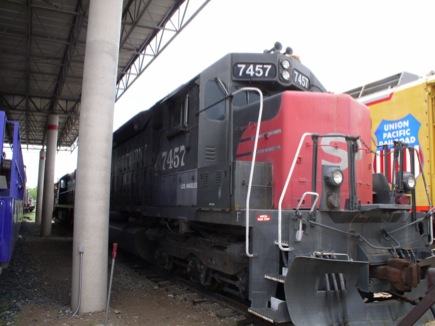
Rio Grande SD40T-2 was built August 1975 and was operational until March 8, 2008. After Union Pacific incorporated the Rio Grande, 5371 was the last T-2 that was still in the full Rio Grande paint. It was retired to Cheyenne, Wyoming until the Union Pacific decided to donate it to the Utah State Railroad Museum. It was delivered and spotted on Union Station's track one on August 16, 2009. It sat on display in this location until March 28, 2010 when it was relocated under the Eccles Rail Center canopy between the Centennial and SP 7457.
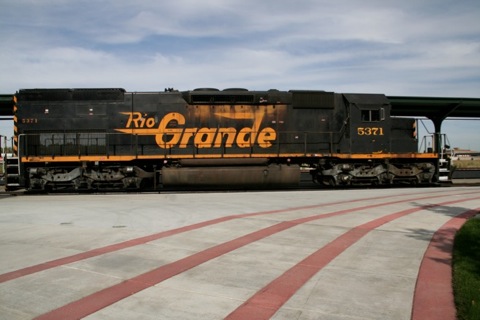
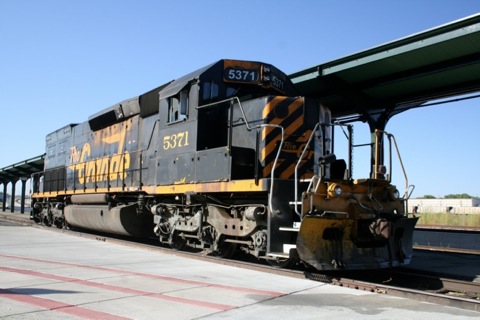
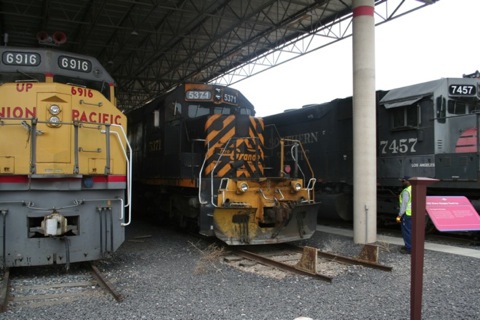
U.P. #26 the General Electric Co. "World's Most Powerful Locomotive" was built in February 1961. It weighs 849,248 Ibs without the tender. It developed a starting tractive effort of212,312 Ibs. It was capable of moving 735 fully loaded freight cars equal to a train 7 miles long at a speed of 12 MPH. The C-C style trucks had 4O-inch diameter wheels to go with a 74/18 gear ratio giving a top speed of 65 MPH. At 18 mph, the giant locomotive developed a continuous tractive effort of 146,000 Ibs. The 8500 HP three-unit locomotive is 178 ft 11 1/4 in. Long including the fuel tender which was a former steam engine tender as indicated by the rivets. The tender had a capacity of 24,384 gals of heavy residual fuel oil. The exhaust temperature of the turbine was 850 degrees F. The air passed through the turbine at a velocity of 1600 MPH. The air intake used 320,000 cubic feet per minute, the equivalent to the amount of air breathed by one half million people in one day. The locomotive also contained an 850 HP diesel engine that was used to start the turbine and move the unit around the yards. Turbine #26 was retired February 28,1970. It was the next to last turbine to operate on the railroad. Its last run was December 18, 1969. Number 26 ran a total of 1,007,853 miles in its lifetime. This one of only two "Big Blows" that has survived. The other one is at the Illinois State Railroad Museum in Union, Illinois.
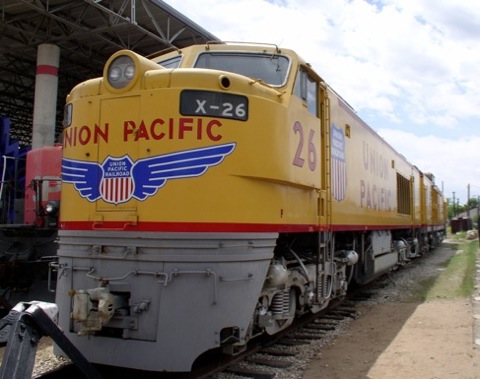
Utah Railway #401 is an ALCO 2400 HP diesel freight locomotive of the early 1960's. It contains a 16 cylinder 4 cycle Model 251 diesel engine and weights 382,400 Ibs. It was built for the Santa Fe in July 1959. It was used for 9 freight trains until retired when the Utah Railway purchased it for use on coal trains over Solider Summit. It was sold for scrap in 1983. The Promontory Chapter of the NRHS rescued the unit and sold it to Broken Arrow Inc. at Clive, UT. Where it worked for several years. It was acquired in a trade to the museum in May 1998. The most distinguishing feature is the long low hood, which has earned this type of locomotive the nickname of "Alligators".
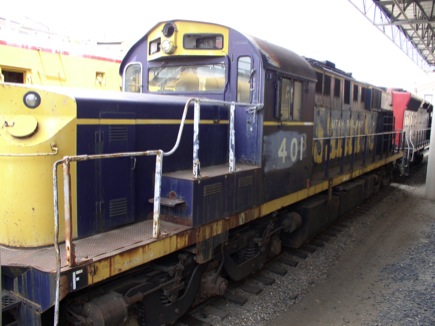
Built 1940-1950 with a 1000 HP 6 cylinder turbocharged diesel engine. It was in service at Hill Field AFB, Utah until donated to the Utah State Railroad Museum.
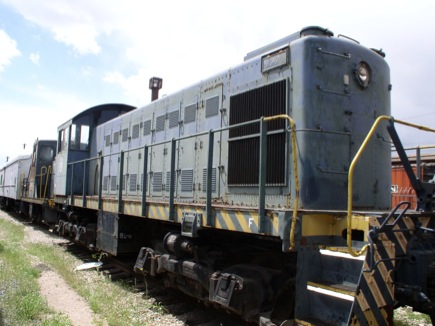
Built January 1953. Service at Hill Field Utah before being donated to the Utah State Railroad museum. These locomotives were built with low cabs in order to be transported easily by ship for use in overseas service. Several were donated to the museum by the military. When in service they transported materiel around the bases including Hill AFB and the Tooele Army Depot.
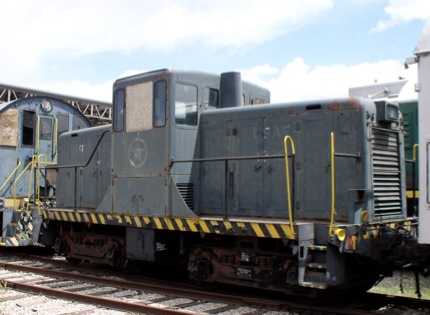
General Motors Electro-Motive Division built the GP-9locomotive from January 1954 until December 1959. There were a total of 4092 units built. A model 567c V-16 diesel engine powered the locomotive. It was rated at 1750 HP. It was used for freight and passenger trains though out the country this is a typical locomotive as used in 19501s This type engine is still used for short line and switching service.
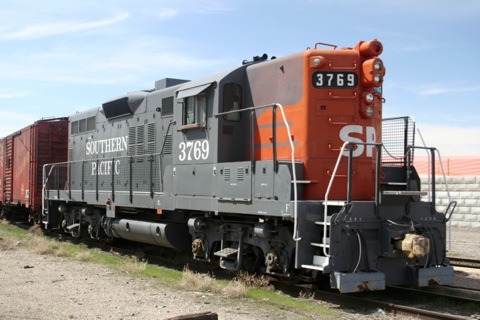
This locomotive was built by Davenport for light switching service. The 44-ton name came about because of a 1937 labor agreement that protected fireman's jobs on diesels above that weight. This engine is the largest possible under that agreement that could be operated by one person. The locomotive had a rated horsepower of 400. They were built between 1940-1956. #1216 saw service at the Tooele Army Depot before being obtained by the Utah State Railroad Museum.
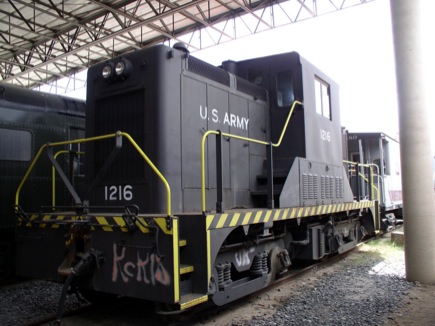
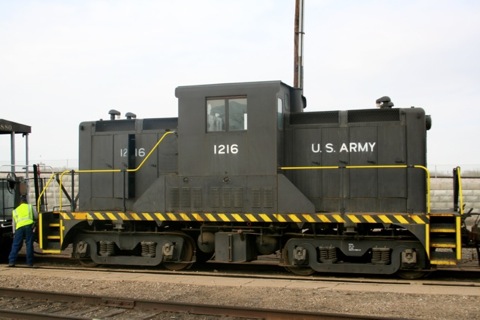
This former Utah Central locomotive was built by General Electric in January, 1953. It was originally a U.S. military locomotive that was donated to the museum. Since it was still operational, it was leased to the Utah Central by the museum and then returned to us after completion of the lease.
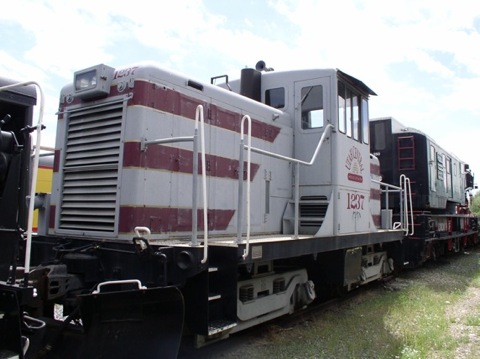
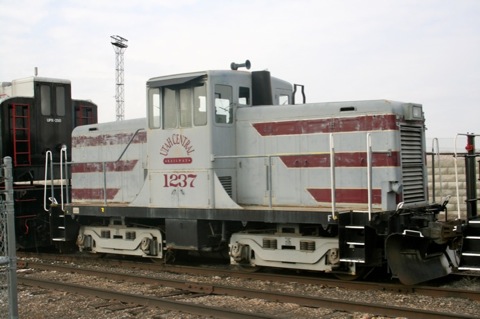
###